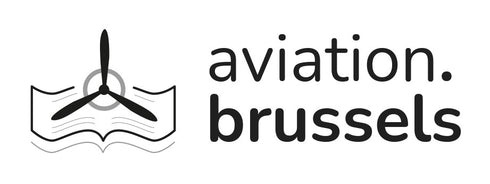No.4 - SUPERMARINE SPITFIRE MK.I-XVIIN RAF-SAAF-RAAF-RNZAF-RCAF & FOREIGN SERVICE
Product image 1

Product image 2

Product image 3

Product image 4

Product image 5

Product image 6

Prix régulier 30,00 € TTC 6%
The Aircam Aviation Series of books took a largely pictorial look at classic military aircraft types, with only a short narrative text serving as introduction.
A companion series of Specials portrayed the camouflage and markings worn by various military air arms and flying units.
A companion series of Specials portrayed the camouflage and markings worn by various military air arms and flying units.
Caractéristiques
| Size | 18,5 X 24,7 X 0,3 cm |
| Nbr. of pages | 50 |
| Book cover finition |
Perfect paperback |
| Published date |
1969 |
| Language | English |
| Author | Ted Hooton |
| Collection / Serie | AIRCAM AVIATION SERIES |
| Editor | Osprey Publishing Limited, England |
Description
SUPERMARINE SPITFIRE MK.I-XVI
IN RAF-SAAF-RAAF-RNZAF-RCAF & FOREIGN SERVICE
The basic design of the Spitfire was finalized by R. J. Mitchell in 1934. While the aircraft has often been compared with other famous types of World War II, it must be remembered that its true contemporaries were the Hurricane, P-36, and Messerschmitt Bf109, and that the Fw190, Mustang, and others, were designed three to six years later.
The success of the Spitfire was due to several factors. When used in its intended role as a defensive fighter, its performance was always equal to, and frequently superior to, that of its opponents. Notable examples were the Battle of Britain, the defence of Malta, and the defeat of the Japanese over Northern Australia and the India/Burma border. The aircraft was also a delight to fly, and its adaptability was quite remarkable. Therefore, it remained as the supreme Allied single-seat fighter and photo-reconnaissance aircraft until 1944. Even later, it could out-manoeuvre many jet fighters and had a higher limiting Mach number in the dive than most until the F-86. Coupled with the early-warning ground radar, which allowed the Spitfire to be used to its best advantage, and with the excellent Rolls-Royce Merlin and Griffon engines, it was a war-winner. On the other hand, it must be recognized that, except the photo-reconnaissance versions—which did not have to undergo the stresses of combat, it proved rather difficult to load the lightly-built air-frame with the extra fuel and bombs required from 1941 onwards. This occasionally hampered its offensive deployment and gave some headaches to the operations planners, especially before the D-Day invasion.
AIRCAM AVIATION SERIES LATE 1960S/EARLY 1970S
The Aircam Aviation Series Of Books Took A Largely Pictorial Look At Classic Military Aircraft Types, With Only A Short Narrative Text Serving As Introduction. A Companion Series Of Specials Portrayed The Camouflage And Markings Worn By Various Military Air Arms And Flying Units.
After 5-6 Pages Of Concise Text Introducing The Subject, The Remainder Of Each Book Comprised B+W Photographs, 8 Pages Of Colour Profile Artwork And 3-4 Pages Of Small Plan-View Tone Drawings, Showing The Upper And Lower Surfaces Of The Aircraft Illustrated In Colour. The Original Editions Of The First Few Titles Were Printed Entirely On Glossy Paper, But Later Titles And Reprints Appeared With Matt Paper For All Except The Colour Profiles. This Resulted In Rather Poor Reproduction Of Some Of The Photographs.
Subsequent Reviewers Have Cast Doubt On The Accuracy Of Some Of The Colour Profiles, But The Range Of Aircraft Chosen Is Still Impressive And The Colour Schemes Often Unusual. The High Prominence Given To Japanese Aircraft Was Very Unusual For The Late 1960s/Early 1970s.
The Aircam Aviation Series Of Books Took A Largely Pictorial Look At Classic Military Aircraft Types, With Only A Short Narrative Text Serving As Introduction. A Companion Series Of Specials Portrayed The Camouflage And Markings Worn By Various Military Air Arms And Flying Units.
After 5-6 Pages Of Concise Text Introducing The Subject, The Remainder Of Each Book Comprised B+W Photographs, 8 Pages Of Colour Profile Artwork And 3-4 Pages Of Small Plan-View Tone Drawings, Showing The Upper And Lower Surfaces Of The Aircraft Illustrated In Colour. The Original Editions Of The First Few Titles Were Printed Entirely On Glossy Paper, But Later Titles And Reprints Appeared With Matt Paper For All Except The Colour Profiles. This Resulted In Rather Poor Reproduction Of Some Of The Photographs.
Subsequent Reviewers Have Cast Doubt On The Accuracy Of Some Of The Colour Profiles, But The Range Of Aircraft Chosen Is Still Impressive And The Colour Schemes Often Unusual. The High Prominence Given To Japanese Aircraft Was Very Unusual For The Late 1960s/Early 1970s.
Text written by aeroflight







